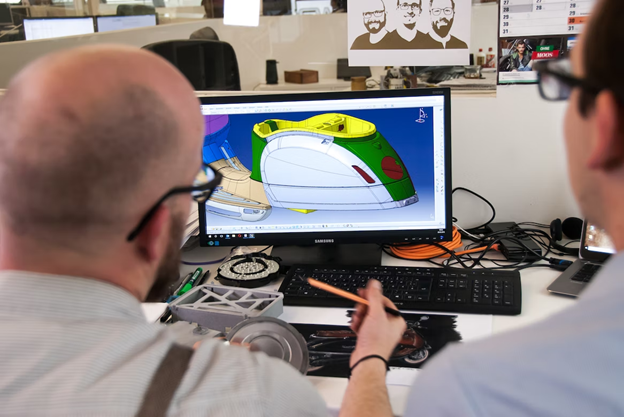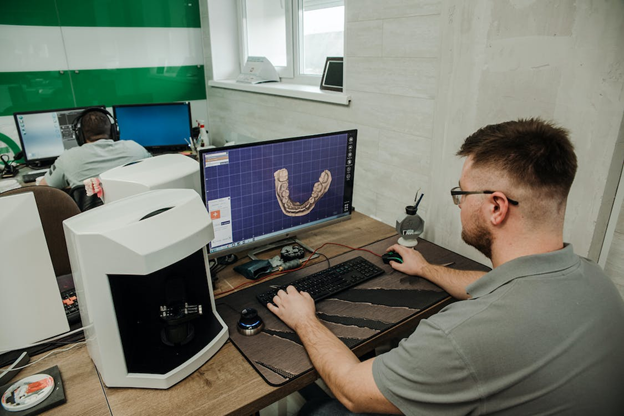Do you ever feel like your creative process is lacking the power to take your projects to the next level? If so, it might be time for you to explore 3D software! Whether you’re a web designer, graphic artist, engineer, or architect — 3D software can provide an unparalleled toolset of options that allow you to elevate any potential project. In this blog post, we’ll discuss how 3D software can provide designers and innovators with the versatility they need in order to create stunning visuals that will speak volumes. Read on and discover why investing just a few minutes into learning about this amazing medium could be one of the best decisions you’ve ever made.

The Basics of 3D Software and Why You Need It
3D designs have become increasingly popular, especially in the architecture world. It presents an efficient means to add detail and complexity to renderings without compromising software functionality. Thus, 3D software for architects enables them to visualize changes more accurately by incorporating their vision into a virtual scene, that can be adjusted and examined with ease. 3D software also includes the ability to develop content such as objects, materials, lights, cameras, and textures to create realistic environments. As such, having access to this versatile software is necessary for anyone looking to bring their design ideas to life for practical applications or even just for fun. With software for architects evolving rapidly, it’s important not to get left behind – invest in some good 3D software and start making your dreams a reality!
The Kinds of Projects You Can Make with 3D Software
3D software is an incredible tool for content creators, giving them the capability to bring their projects to life in powerful and meaningful ways. Specialized software can be used to create movies, documentaries, CGI effects, or even product renderings. Even those without extensive knowledge of 3D animation can start taking advantage of the technology thanks to many user-friendly programs available today. Knowing how to use 3D software gives you greater creative freedom in how you express yourself and provides more control over your project’s appearance down to minor details. Additionally, using 3D software offers stability and reliability — once you perfect how a certain element appears in a 3D scene, that exact appearance can be easily replicated multiple times throughout your project without fear of inconsistencies. With all its benefits, it’s no wonder why so many content creators are turning towards utilizing 3D software for their projects.
Tips for Choosing the Right Program, Equipment, and Tutorials
With so many options out there, it’s hard to know how to choose the right program, equipment, and tutorials for your project. As such, it’s important to do some research and plan ahead — think about what types of tasks you’re likely to be doing in the near future as well as any gaps in your knowledge. Start by looking at user reviews online; this can give you a good indication of which programs are popular, easy to use, and suitable for the task at hand. Additionally, try consulting with industry professionals — they may have valuable insights on which tools and tutorials could be helpful. Finally, make sure to set yourself some achievable goals before committing to any specific piece of software or tutorial. Following these steps will help ensure that you find the right resources for your project!
Common Mistakes to Avoid When Working With 3D Software
When working with 3D software, it’s easy to make some common, yet avoidable mistakes. For instance, one error to look out for is using a lower-resolution texture than you need. This could lead to low-quality image rendering that just doesn’t speak to the audience. Plus, it also takes considerable time to scale up textures and objects late in your production cycle, which no one wants to deal with! Another blunder people often commit when working with 3D technology is setting up scenes without proper depth or expectations in mind. Make sure you’ve blocked out each scene with proper staging and visualization prior to the actual production in order to achieve the best possible result—that way you won’t be wasting time (and energy!) trying to complete a complex task without clarity on what needs to be done. If you stick with these tips, overcoming possible roadblocks will be only a mere thought away.

3D software offers an incredible range of possibilities to those seeking a creative and challenging outlet. From basic modeling to intricate engineering projects and printing, the options are at your fingertips depending on the software and equipment you choose. When it comes to implementing these technologies, keep in mind the advice offered here to get started. Careful research, understanding the parameters of cost-effectiveness and safety regarding 3D software use, and following best practices will ensure success. Have fun with 3D and explore its potential; don’t let common mistakes hold back your creative momentum. With a wide world of possibilities at your fingertips, there is no limit to what you can do with 3D software!
